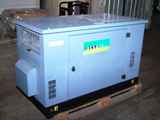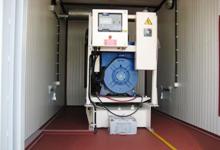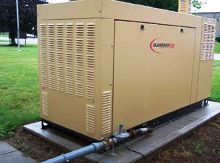Electric gas generators
 Electric gas generators (gas power plants) — devices which transform energy when burning fuel, i.e. gas, in electricity. These devices are used very widely: electric gas generators can work both as the main and as a backup source of electricity for production facilities, industrial complexes, firms and companies, institutions and, of course, residential buildings and villages.
Electric gas generators (gas power plants) — devices which transform energy when burning fuel, i.e. gas, in electricity. These devices are used very widely: electric gas generators can work both as the main and as a backup source of electricity for production facilities, industrial complexes, firms and companies, institutions and, of course, residential buildings and villages.
Electric gas generators are used only in cases where they believe that electricity is not supplied rationally or that it is too expensive a pleasure. For example, this can be encountered if your house is located far from the whole village, and naturally the supply of electricity will not be convenient. Usually, such power plants are used by teams of road repair workers. They are forced to work at a great distance from the power grid. Such sources of electricity are also used to obtain the cheapest energy, of course, if it is possible to use gas networks. In this way, providing not only electrical but also thermal energy.

As a raw material used to produce electricity in the Gas generator can use both related mine gases, be it oil, and biogas (obtained as a result of organic waste or wood, etc.). This argument can only speak to one of the advantages of this device — cheaply generated energy. As everyone knows, natural gas is the cheapest raw material, but biogas has a fairly low price, which of course affects the price of electricity.
Also, electric gas generators, in addition to their efficiency, can boast of high environmental friendliness. When burning gas, the combustion products pollute the environment to a lesser extent than when burning the same gasoline or fuel oil, and they also do not leave visible products after combustion, for example, when burning coal or peat. In addition, such types of electrical installations have been created that are capable of converting waste into biogas, thus simultaneously serving as a tool for generating electricity and for disposing of waste.
Structurally, an electric gas generator is a heat engine that converts the energy released during gas processing into mechanical energy to turn the rotor of the generator, which in turn serves to generate electrical energy. If desired and necessary, a device can be added to it that processes waste from life and allows you to get gas from it.

— a micro-turbine, the power of which is in the range of 3 to 500 kW, the motor of which is cooled by air;
— gas piston whose power varies from 500 kW to 5 MW;
— a gas turbine, the power of which can be higher than 5 MW, the engine of which is water-cooled and can operate without stops and interruptions. Micro-turbine installations serve for backup use because they have a tendency to overheat and are not suitable for a long service life. Gas pistons and gas turbine units are suitable for long-term use. They can even be compared to mini power plants, for the simple reason that they are ready to serve constantly, without interruptions, breakdowns and overheating. They are produced both in a stationary form and in a more compact form.
Another advantage of using them is the short payback period. The cogeneration mode inherent in such installations contributes to the production of not only electrical energy, but also heat. Combustion products are not released into the atmosphere, but are transported through installations in the heating network of residential buildings, enterprises, etc.
The most useful are gas piston stations, their service life can reach up to 30 years, and gas turbines only 15 years. Also significant advantages of such installations are the use of a small number of personnel for their maintenance, a very low noise level, as well as the possibility of increasing the power by adding additional pieces of equipment.
However, these installations also have disadvantages, for example, in order for the gas generators to work at temperatures below zero, it is necessary to heat the engine crankcase. Otherwise it won't start.
They are engaged in the production and sale of electric gas generators of both local and foreign manufacturers. Typical representatives of manufacturers of electric generators are the group of companies AEMS in Novosibirsk, Soyusenergo in Yekaterinburg, EltEnergoEffect in Moscow and installations of such brands as FG Wilson, UNIVERSAL, RIG, PowGen, Champion, Subaru, HONDA, FUBAG, Alt Group in St. Petersburg and many others.
